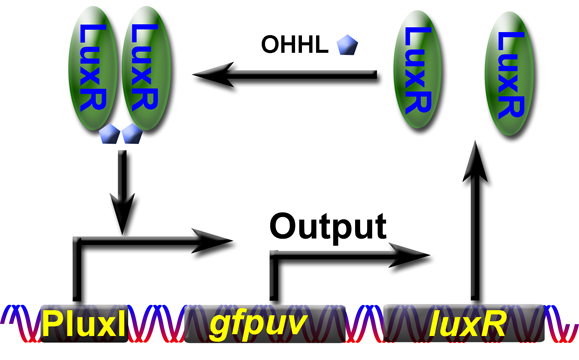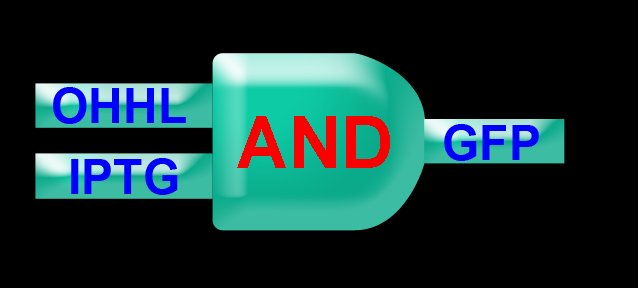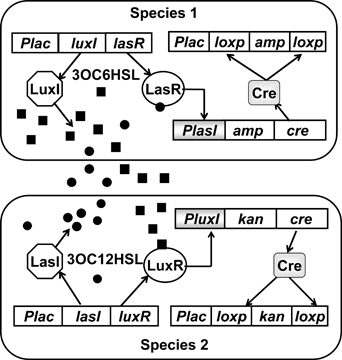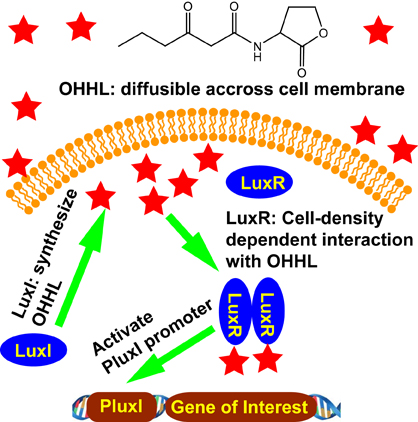|
|
|
The Biomolecular Engineering Laboratoryin the School of Life Sciences at USTC |
|
|
|
ResearchAn important aspect of synthetic biology is how to create genetic circuits with desired functions. Unfortunately, construction of artificial genetic circuits using wildtype genetic parts, including promoters, transcription factors, etc, frequently fails because dynamic properties of the genetic parts do not fall into the desired parameter space of the circuits. Using directed evolution, we are able to generate a diverse array of genetic parts each with unique dynamic properties, and such a repertoire of genetic parts allow for exploring design principles of biological networks where the conventional rational design approach can not access at all. The followings are some completed projects in the lab: 1. Genetic positive feedback loopWe constructed a simple genetic positive feedback loop using LuxR transcriptional activator and PluxI promoter, and then used directed evolution to improve its responses to the signaling molecule OHHL. |



